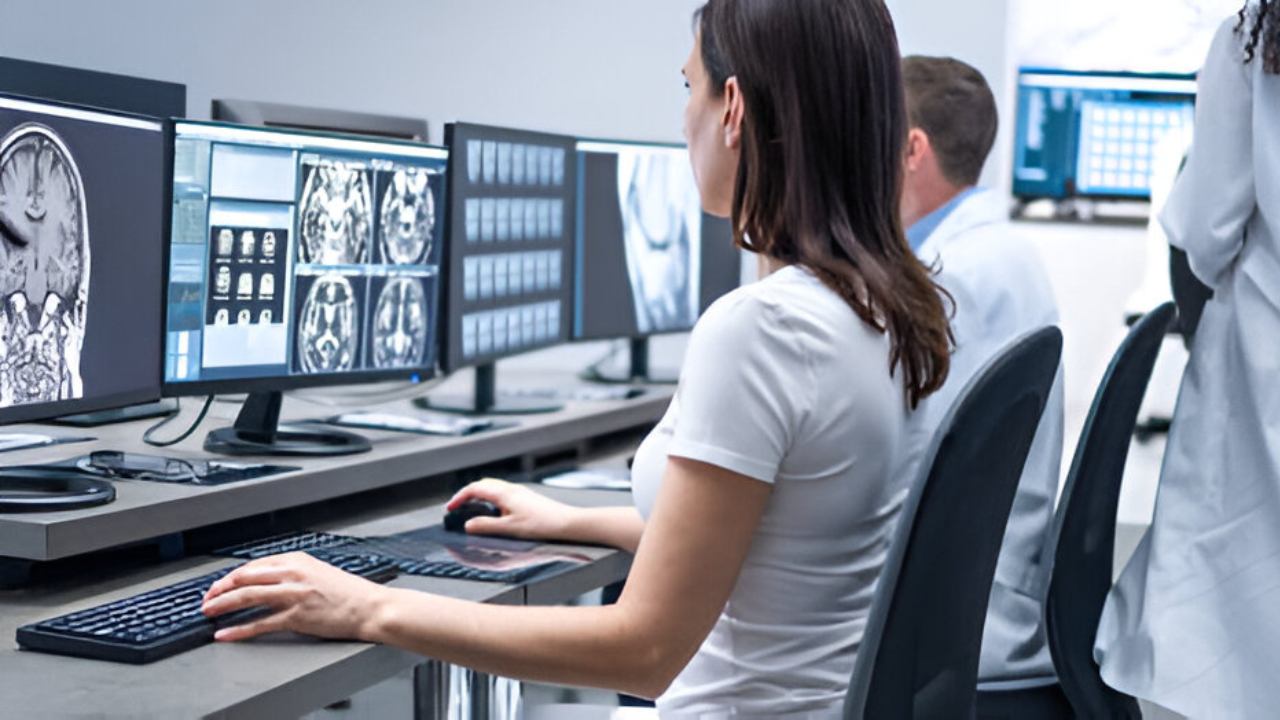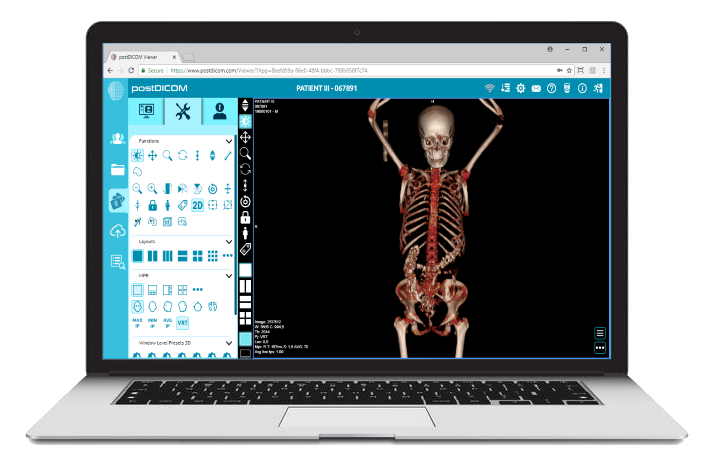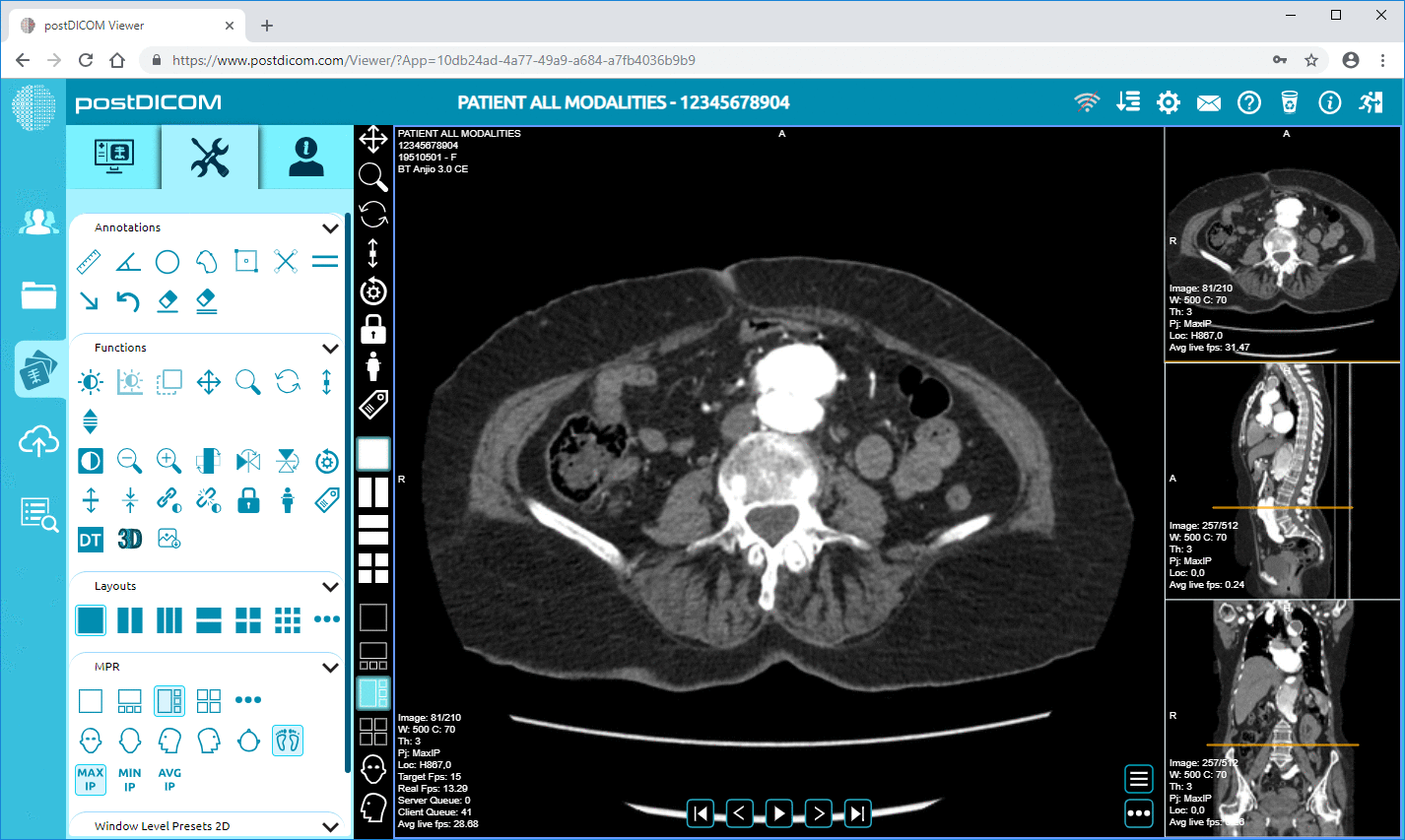
In today’s digital-driven healthcare environment, Picture Archiving and Communication Systems (PACS) stand at the forefront of medical imaging technology, offering unprecedented support to clinicians and radiologists.
This technology streamlines the storage and retrieval of imaging data and is crucial in integrating with Radiology Information Systems (RIS) and Electronic Health Records (EHR). Such integrations amplify hospital workflow efficiency, ensuring comprehensive patient information is readily accessible across departments.
As healthcare facilities increasingly adopt these integrated systems, they will facilitate more informed decisions, better patient outcomes, and significantly reduced operational redundancies.
This blog explores the dynamic relationship between PACS, RIS, and EHR systems, shedding light on how they collectively enhance hospital efficiency and patient care.
Picture Archiving and Communication Systems (PACS) have revolutionized how healthcare providers manage medical images. PACS is a medical imaging technology that provides economical storage, rapid retrieval of images, convenient access to images from multiple modalities (source machine types), and digital post-processing capabilities.
This technology supports vital imaging modalities such as ultrasound, MRI, CT scans, and X-rays, allowing for electronic storage, retrieval, distribution, and presentation of these images.
The significance of PACS extends beyond just image handling; it is pivotal in the digital transformation of healthcare imaging. By digitizing the imaging process, PACS eliminates the need for manual film archives, reducing space requirements and costs associated with film-based imaging.
Moreover, it enhances the ability of radiologists and other medical professionals to access patient imaging studies and consult remotely, facilitating faster and better-informed decision-making crucial for effective patient care.
This seamless and efficient handling of medical images profoundly impacts the healthcare system's ability to provide high-quality care efficiently and effectively.
Radiology Information Systems (RIS) are specialized databases that handle radiology departments' administrative and workflow processes. These systems manage everything from patient scheduling and tracking to the handling of imaging orders, and they play a crucial role in the seamless operation of medical imaging services. RIS ensures that every part of the radiology workflow, from booking to billing, is systematically organized.
In a hospital setting, RIS functionality extends to managing detailed radiology reports, integrating patient radiology history with new imaging orders, and efficiently scheduling radiology equipment and personnel. This improves patient management and reduces waiting times, as radiology departments can operate more fluidly.
Integrating PACS with RIS brings a synergy that significantly enhances hospital efficiency. When PACS and RIS work together, the imaging process—from ordering to retrieval and analysis of images—is streamlined. This integration allows for real-time updates to patient records in RIS when images are captured and stored in PACS, eliminating the need for duplicate data entry and reducing the possibility of errors.
Consequently, this seamless connection between PACS and RIS boosts productivity and enhances patient care quality by providing healthcare providers with comprehensive data at their fingertips. This efficient data management is critical in today’s fast-paced medical environments, where timely information can drastically influence patient outcomes.
Electronic Health Records (EHRs) are digital versions of patients' paper charts, providing a comprehensive record of their medical history, treatments, and health outcomes. They are fundamental in modern healthcare settings because they consolidate patient data across time and healthcare providers, promoting long-term, coordinated patient care.
Integrating PACS with EHR systems offers profound benefits. Such integration ensures that all medical imaging data is stored securely and readily accessible within the patient's broader medical context. This accessibility enhances the completeness of patient data, which is crucial for accurate diagnosis and effective treatment planning. Healthcare professionals can view patients' images alongside their medical records, allowing for a more informed review and assessment process.
Several case examples illustrate the positive impact of PACS-EHR integration. In one instance, a healthcare facility noted a significant improvement in diagnostic accuracy after integrating their PACS with EHR. The seamless access to a patient's historical health data alongside new imaging tests helped clinicians detect subtle changes and patterns that may have been overlooked. Another case showed enhanced patient outcomes in a hospital where the integration facilitated quicker diagnostic procedures and more timely interventions, benefiting patient care and recovery trajectories.
Such integrations streamline workflows and foster a more collaborative environment where information is shared efficiently among different healthcare specialists. This comprehensive view of patient data supports more accurate diagnoses and personalized treatment plans, ultimately improving patient health outcomes.
Integrating Picture Archiving and Communication Systems (PACS) with Radiology Information Systems (RIS) and Electronic Health Records (EHR) presents several challenges, but overcoming them can significantly enhance healthcare delivery. One major hurdle is data compatibility. Systems developed at different times or by other vendors may not seamlessly communicate, which can disrupt the workflow and limit the benefits of integration.
Security concerns also loom large as integrating systems increases the potential attack surface for cyber threats. Protecting patient data across different systems without impeding access for authorized users is a balancing act that requires robust security protocols.
To address these challenges, healthcare facilities should adhere to a few best practices:
1. Standardization And Compliance: Adopting standard data formats like DICOM for imaging and ensuring that all systems comply with HIPAA regulations can alleviate compatibility issues.
2. Use Of Middleware: Employing middleware solutions can act as a bridge between different healthcare IT systems, facilitating smooth data transfer and integration without requiring significant changes to existing systems.
3. Robust Security Measures: Implementing advanced encryption for data transfer, rigorous access controls, and regular security audits can help safeguard sensitive patient information.
4. Continuous Staff Training: Regular training sessions are crucial for staying updated on new system features and security practices. This ensures that all users can efficiently use the integrated system and know how to handle data securely.
5. Vendor Collaboration: Working closely with vendors who understand the intricacies of PACS, RIS, and EHR systems can provide valuable support during integration. They can offer tailored solutions that address the healthcare facility's specific needs and challenges.
The successful integration of PACS with other hospital systems hinges on meticulous technical preparation and stringent compliance with health data regulations. The technical requirements are multifaceted, encompassing software compatibility to ensure seamless communication between PACS and other systems like RIS and EHR. All software involved must interact without friction, which includes upgrading legacy systems or adopting middleware that can translate between different data formats.
Network requirements also play a crucial role. The network must be robust enough to handle large volumes of data transfers without latency, ensuring that medical images are accessible in real-time across various departments. This often means investing in high-speed networks and possibly dedicated lines that prioritize medical imaging data to avoid bottlenecks.
Compliance with health data regulations, such as HIPAA in the United States, is paramount. These regulations dictate how medical information, including imaging data, must be handled to protect patient privacy. Ensuring compliance involves setting up secure data transmission channels, encrypted storage solutions, and access controls limiting data visibility to authorized personnel.
Hospitals need to conduct regular audits to verify that their PACS integration meets technical standards for efficiency and legal standards for data protection. This dual focus ensures that the integration supports medical staff in providing top-tier care without compromising patient privacy or violating regulatory mandates. In cases of international operation, hospitals must also consider additional regulations from other countries, adapting their systems to comply with multiple legal frameworks.
By thoroughly addressing these technical and compliance aspects, healthcare facilities can enhance their operational efficiency and provide safer, more effective care. This foundation allows medical professionals to access the full spectrum of patient data securely, supporting a holistic approach to healthcare.
 - Presented by PostDICOM.jpg)
Looking ahead, integrating PACS with emerging technologies presents exciting opportunities that could revolutionize how medical imaging is handled within healthcare facilities. A key area of innovation is the application of artificial intelligence (AI) and machine learning (ML) in enhancing the capabilities of PACS systems.
These technologies significantly improve the analysis of medical images, potentially increasing the accuracy and speed of diagnoses. AI algorithms can be trained to detect patterns and anomalies that might be missed by the human eye, offering radiologists a powerful tool to enhance their assessments.
In the future, PACS might also become more intertwined with other hospital systems and devices. The rise of the Internet of Medical Things (IoMT) could lead to a new era of interconnected devices where PACS directly communicates with medical equipment, automating data entry and image capture aspects. This would streamline workflows and reduce the error margin, ensuring patient data is updated in real time across all platforms.
The standards and protocols for integrating PACS with these innovative solutions will evolve as technology evolves. This will require continuous adaptation and investment in system upgrades to ensure that the benefits of such integrations can be fully realized without compromising the security and integrity of patient data.
These advancements will transform the technological landscape of healthcare facilities and enhance the quality of patient care. By keeping a close eye on these trends and preparing to integrate new technologies, healthcare providers can ensure they remain at the cutting edge of medical imaging technology.
In the ever-evolving landscape of healthcare technology, integrating PACS with systems like RIS and EHR is proving to be more than just a technological upgrade—it's a fundamental shift towards more efficient, accurate, and collaborative healthcare. Healthcare facilities can achieve streamlined workflows, enhanced diagnostic accuracy, and improved patient outcomes through this integration.
As we look to the future, the potential for further advancements, such as the incorporation of AI and machine learning into PACS, promises to elevate medical imaging capabilities even further. For healthcare providers, staying informed and adaptable to these changes is crucial, ensuring they can leverage the full potential of PACS to enhance their services and patient care.
Understanding the technical requirements, compliance considerations, and potential challenges is critical for those looking to integrate or upgrade their PACS systems. Choosing a solution like PostDICOM can help navigate these complexities easily, offering a robust, secure, and user-friendly platform that aligns with the future of medical imaging technology.


|
Cloud PACS and Online DICOM ViewerUpload DICOM images and clinical documents to PostDICOM servers. Store, view, collaborate, and share your medical imaging files. |